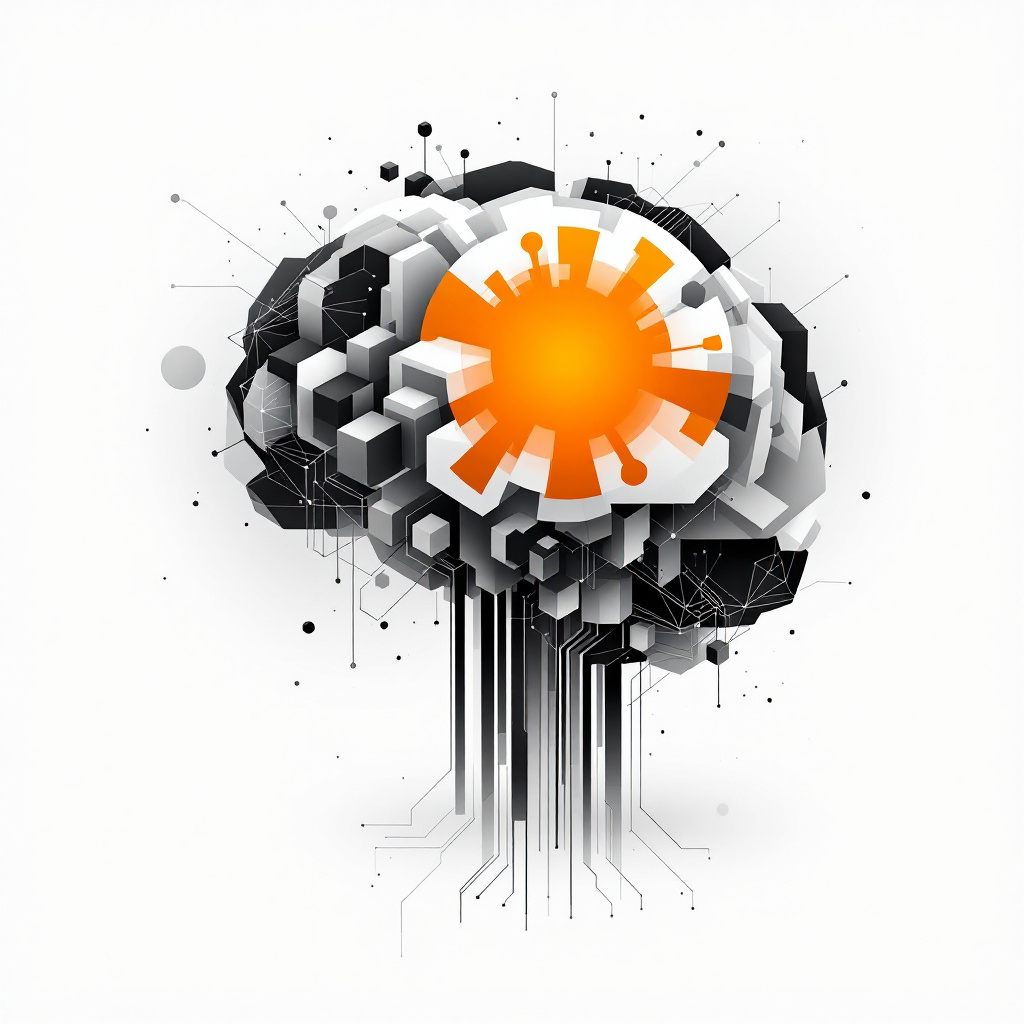.png)
How to Avoid 'Data Poisoning' and Build Reliable AI Systems

There's a lot of well-deserved excitement about AI's incredible power. We're seeing intelligent agents transform GTM teams, and AI deliver tangible bottom-line results across industries. But if you're not paying critical attention to the very foundation of your AI – your data – you're building on sand. Flawed data leads to flawed AI, which will result in a lot of hallucinations, bias, and unreliable outcomes.
For any AI investment to truly pay off, leaders must understand this foundational challenge. And that starts with the integrity of your data. As I discussed with cybersecurity leader Kodjo Hogan on a recent "Swimming with Sharks Podcast" episode, "As AI adoption accelerates, so does the need for serious conversations around risk, governance, and security." Too many leaders focus solely on productivity gains without stopping to ask if the data driving these tools is accurate, protected, and even unbiased. That oversight could cost more than just operational efficiency. It could compromise trust, integrity, and long-term viability.
The Dark Side of Data and Data Poisoning
You've probably heard the term "garbage in, garbage out" when it comes to data. With AI, it's more profound. We're talking about data poisoning: the intentional or unintentional corruption of the data an AI system learns from, causing it to behave incorrectly or even maliciously.
The consequences can range from subtle errors to catastrophic failures:
- Intentional Poisoning: Imagine a competitor subtly injecting false information into public web data that your company's AI scrapes for market analysis. This could lead your product development team down the wrong path or give your sales AI biased comparisons. Or, consider a disgruntled employee subtly altering customer support records, leading your customer service AI to provide consistently incorrect or frustrating answers. In 2024, University of Texas researchers even found data poisoning vulnerabilities in AI systems like Microsoft 365 Copilot, focusing on retrieval-augmented generation techniques.
- Unintentional Poisoning: This is often more common and equally damaging. Think about inconsistent data entry across departments, sensor malfunctions feeding bad numbers into a supply chain optimization AI, or flawed data migrations leading to incorrect training data. These seemingly small issues can result in your AI hallucinating facts, making skewed predictions, or misclassifying critical information. A startling example comes from a well-publicized case where an AI legal tool gave a New York lawyer fake court rulings because its data integrity was compromised (Sopra Steria, 2025). The most prominent case of this, as Kodjo and I discussed, was Builder.AI, which initially claimed to use AI for app building but was later revealed to be using human developers in India, sanitizing their output – a real-world case of AI fraud driven by a CEO not wanting to hear the hard truth about the resources needed.
The result? The cost of bad data is staggering. According to Gartner, poor data quality costs organizations an average of $12.9 million per year.
Building Resilience with Pillars of Data Integrity
So, how do you prevent your AI from getting poisoned and ensure it's built on a bedrock of trust? It comes down to three critical pillars:
1. Proactive Data Cleansing & Validation
This is your first line of defense. You need to stop bad data before it even enters your AI ecosystem.
- Implement Robust Data Validation Rules: Establish strict rules at the point of data entry (e.g., ensuring all customer IDs are unique, dates are in a consistent format, or phone numbers have the correct number of digits).
- Regular Data Audits & Deduplication: Don't just set it and forget it. Schedule regular audits to identify and fix inconsistencies, missing values, and duplicate entries. Automate deduplication processes where possible.
- Standardization: Ensure consistent formatting and terminology across all your data sources. This might involve master data management (MDM) systems to maintain a "golden record" for critical entities like customers or products.
The benefit here is clear: you ensure the input data your AI consumes is as clean and accurate as possible, preventing errors and malicious insertions from corrupting your models from the start.
2. Robust Data Governance & Management
This pillar is about control, accountability, and transparency over your data assets. You need to "define the use case" for AI and then put in "auditable steps" and "limit the risk of biases being entered into the prompt."
- Define Clear Data Ownership: Assign specific individuals or teams responsibility for the quality and integrity of each dataset. This clarifies accountability.
- Implement Strict Access Controls: Apply the principle of least privilege – only those who absolutely need access to sensitive training data should have it. This reduces the surface area for intentional poisoning.
- Establish Audit Trails: Maintain detailed logs of who accessed, modified, or used specific data sets, when, and for what purpose. This makes it easier to trace suspicious activity or identify the source of corrupted data.
- Utilize Master Data Management (MDM): As mentioned, MDM creates a single, authoritative source of truth for critical business data (e.g., customer records, product catalogs). This eliminates discrepancies that can lead to unintentional poisoning or biased AI outputs.
- Policy & Education: It’s vital to "educate the good and the bad of AI" and write clear policies and procedures for its use, backing that up with education programs and continuous monitoring.
3. Architectural Safeguards & LLM Chaining
Beyond clean data and strong governance, you can build resilience directly into your AI architecture, especially with Large Language Models (LLMs).
- Retrieval Augmented Generation (RAG): This is a powerful technique for combating hallucinations. Instead of relying solely on an LLM's vast, but potentially outdated or generalized, training data, RAG grounds the LLM in verified, internal, real-time knowledge bases. The LLM retrieves facts from your trusted documents or databases before generating a response, significantly reducing the risk of fabricating information.
- Chaining LLMs/Agents: For complex tasks, break them down into smaller, verifiable steps. You can "chain" multiple LLMs or AI agents together, where each step's output is checked or refined by the next. For instance, one LLM might generate content, a second could check it for factual accuracy against an internal knowledge base, and a third might refine the tone and style.
- Continuous Monitoring & Feedback Loops: No AI system is "set it and forget it." Implement constant monitoring of AI outputs for signs of hallucination, unexpected behavior, or performance degradation. Establish robust human feedback loops where your teams can flag issues, correct responses, and provide data for retraining models.
- The Blockchain "Bomb": As Kodjo unexpectedly revealed on the podcast, decentralized ledgers could play a key role. Imagine storing your core data on a blockchain-based data store where its integrity is distributed and immutable. Every transaction or data point is recorded in multiple places you cannot change. This would allow for constant differential analysis of hash values across different data stores, proving data integrity and fighting against deep fakes and data poisoning before the data even enters the LLM. It’s "the most hated technology in the past 10 years going to be the thing to save us from AI biases or and AI database poisoning." While nascent, the potential for blockchain and quantum computing to ensure data provenance and integrity at scale is immense.
What to Do If You Suspect Data Poisoning
Despite your best efforts, the threat of data poisoning, whether malicious or unintentional, is ever-present. Knowing how to react quickly is crucial.
- Isolate & Contain: Immediately isolate the affected AI models or data pipelines from further input or output. Stop using the potentially compromised data for training or real-time inferences.
- Investigate the Source: Determine if the poisoning was malicious (e.g., from an external attack, a disgruntled insider) or unintentional (e.g., a software bug, a faulty sensor, a human error in data entry). Forensic analysis of logs and audit trails is critical here.
- Quarantine & Cleanse Data: Identify and quarantine the corrupted data. Implement rigorous cleansing procedures to remove the poisoned elements. This might involve manual review, automated anomaly detection, or reverting to a known good backup.
- Re-train & Validate: Once the data is clean, re-train your AI models using only verified, trusted datasets. Conduct extensive validation and testing to ensure the models are performing as expected and free from bias or malicious influence.
- Strengthen Defenses: Review and enhance your data governance policies, access controls, monitoring systems, and architectural safeguards based on the incident. Consider implementing advanced threat detection for data integrity.
- Communicate & Document: Transparently communicate the issue (internally and externally, as appropriate), the steps taken, and the resolution. Document the incident thoroughly for future learning and compliance.
A Leadership Imperative
Data integrity is the invisible backbone of all your AI aspirations. It impacts your brand's reputation, your ability to make sound decisions, and ultimately, your competitive advantage. As I said in my podcast, "The lone man on AI is not anything that should rest on any one person's shoulder." You need pragmatists, optimists, and conservatives at the table. You need psychologists, economists, criminologists, and HR leaders to discuss the best path forward.
Leaders who ignore data integrity are building their AI future on a shaky foundation, risking major setbacks that could erase all the promised gains. Strategic investment in data governance, cleansing, and resilient AI architectures is an essential investment in building predictable, reliable, and trustworthy AI systems that your entire organization can depend on.
Your Foundation for Predictable AI
The promise of AI is transformative, but its realization hinges on the quality and integrity of your data. Avoiding data poisoning and ensuring your data is clean, well-governed, and intelligently architected are non-negotiable steps. By prioritizing these foundations, you empower your AI to deliver reliable insights, drive predictable outcomes, and become a true asset that fuels your organization's growth.
If you're eager to hear a deeper conversation about the hidden dangers of AI, model poisoning, AI psychosis, and the unexpected role of blockchain in security, I highly recommend watching my full "Swimming with Sharks Podcast" episode with Kodjo Hogan. It's a conversation you won't want to miss.
And if you're looking to get your organizational data protected, unified, and cleaned to ensure your AI foundation is rock-solid, my team at Manobyte specializes in building these essential capabilities. We're here to help you navigate these complex waters and ensure your AI serves your goals effectively.
Ready to secure your AI's foundation? Contact us today to discuss your data protection and unification needs!








